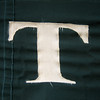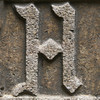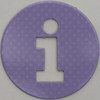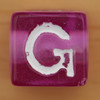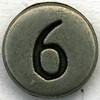This blog has been set-up as part of the 23 Things on a Stick: A Library Learning 2.0 Program. The 23 Things encourage all of us to experiment and learn about the new and emerging technologies that are changing how information is used and created on the Internet today.
The 23 Things On a Stick Team modified The Learning 2.0 program designed by Helene Blowers, Technology Director, Public Library of Charlotte & Mecklenburg County that was loosely based upon Stephen Abram's article 43 Things I (or You) Might Want To Do This Year (Information Outlook - February 2006) and the Web site 43 Things. We also used ideas from the California School Library Association School Library Learning 2.0 and other Library Learning 2.0 programs. 23 Things On a Stick offers ideas to "jump start" your learning. We hope you will share your ideas on how these Web 2.0 tools can be used in your libraries and media centers. We have used many Web 2.0 tools to design this program, including Blogger, Flickr, YouTube, PBWiki & Bloglines—which we learned as we went. You can learn them, too.
Frequently Asked Questions 1. How does this online learning program work?
This is a self-discovery program that allows participants to take control of their own learning. Participants are encouraged to work together with others in their buildings and regions and to share their insights and discoveries with others through their blogs and in person. 23 Things On a Stick is web-based and not tied to any particular computer. You can work at home, at school, at your public or academic library. You may need to work at home if your place of work or local library blocks multimedia or other sites.
2. Who can participate?
This program is open to all staff in any Minnesota library—public, academic, school, or special—as well as members of their Governing Boards, their Friends groups, or Advisory Groups. Each person must register her/his own blog. 23 Things on a Stick is approved for Minnesota Certification for Library Employees (12 contact hours) and CEUs. 2a. I started 23 Things On a Stick in the first round. Can I do this round, too?
Yes, you can. Use your original blog, but re-register here, so we know you are part of Round 2. Anyone who wants to do them all again can re-register, too. We want as many people to finish as possible so we will have a group ready to do More Things On a Stick.
3. How do I register my blog?
After you have created a blog using Blogger or other service as explained in Thing 1, register by clicking here. Note that you will not receive a confirmation of registration. We will add your blog to the main mother blog by region--check the Participants' Blog list on the sidebar for your blog. This may take a week or so, since we must add them manually. We will not list your name; only your blog's name. Don't know your region? Click here for a map. 3a. Where's my blog? It is not on the list under my region.
All of the blogs are entered on the list manually--it is not an immediate process from SurveyMonkey to the 23 Things On a Stick main blog (wouldn't that be nice?). It may take a week to get the blog listed. If your blog is not up after a week, email minn23@gmail.com with your name, the blog name, and URL.
3b. The link to my blog doesn't work or goes to some weird blog. What's the deal?
Possible reasons:
- The links are copied and pasted into the main blog, so it is possible the link had a typo or was incomplete. We try to check them, but we miss some. Email minn23@gmail.com with your name, the blog name, and URL so we can check the registration info.
- You registered a blog that belongs to someone else. If you did not create your blog prior to registering and just selected a URL without checking availability, you may have a link to a "weird blog." Re-register with a new URL. We will change the list to reflect your new blog.
- We couldn't figure out the URL you supplied, so it is not listed yet. You will be hearing from us soon.
- You registered multiple blogs with different names and/or emails and we are waiting to get that straightened out with you.
4. How long do I have to complete the program?
Participants who wish to receive the completion incentive must register their blogs by June 15 and complete all 23 Things (and blog about each one!) by September 15. Registration for Round 2 begins May 15, 2008.
5. Are there prizes?
Yes! Participants who complete the entire course will receive a completion incentive and be entered for additional prizes. To be eligible for prizes, you must register your blog as described in Thing 1 and complete all Things by September 15. Only Minnesota participants are eligible for prizes.
6. How do I track my progress for the 23 Things?
You will create a blog of your own in Thing 1 to track your progress. Please use your blog to write your reactions to the lessons and add any ideas you may have on how to use Web 2.0 tools for yourself and your library. This is your time to experiment, have fun, and learn at you own pace. Links to the blogs of all participants are listed by region on the front page of the mother blog.
Include the Thing # and title in the heading of each post. It will help you and the 23 Things on a Stick Team track your progress. It is helpful when you want to refer back or add something new on a specific topic or tool, too.
7. How will you know I have done all the Things?
You will write about each Thing you complete (see previous question). Each of the multitypes will be reading and tracking their participants' blogs.
8. Can I blog anonymously?
Yes & no. Since you control all the information that you share on your blog, you can choose to use a screen name to keep yourself anonymous if that makes it easier/more comfortable for you. However, if you want to be eligible for the prizes, you must register your blog with the 23 Things On a Stick team with a valid email. Your blog will be posted on this blog, but your "real identity" will not be listed.
But, really, why be anonymous? Other 23ers want to know who you are so they can share and learn more. It is not necessary to put all your personal info in your profile, but complete anonymity works against the social community we want to create with 23 Things On a Stick.
9. How much do I have to write in my blog posts?
Each blog post must describe which Thing you have completed (remember to put that in the post title, too), what your experience was learning about it--easy, hard, impossible--ideas how you can use this in your library or media center or in other areas, and other comments on the process. While we don't expect a dissertation on every Thing, we do expect thoughtful reflection and active participation that is clear in the post. Single line posts or those that show perfunctory participation will not be counted.
10. Will there be any training classes offered on how to do this?
There will be no statewide classes or workshops offered to support this program. Instead, staff are encouraged to work together with others in their libraries or region and share with each other their discoveries, techniques and "how to" both in person and through their blogs. You are encouraged to be resourceful and find a co-worker or another staff member who can help. Be sure to share your knowledge and expertise too!
We will provide helpful hints, encouraging words, and post comments on your blogs from time to time. The 23 Things On a Stick team will be available by e-mail to answer your questions. Individual multitype regions may offer opportunities to work together or additional sessions on the 23 Things On a Stick. Watch your multitype’s Web site for more information or click the region under 23 Things On a Stick Activities on the sidebar. You will receive a weekly newsletter starting in mid-June (after registration is closed) that includes hints about the Things.
11. Is there any tech support?
We can assist you with the course, but not your computer or Internet connection. Here are some hints about Web 2.0 tools that might help you. 12. Do any of the 23 Things On a Stick require downloads?
Flash is required to view many of the applications. Chances are this is already installed on your computer, but if it is not, click here for a free download. Adobe Reader is required to read a few of the links. If you do not have it, you can get it free here. Java needs to be enabled for many of the applications, too. Here are instructions on how to enable Java. Always check with your tech people before downloading anything.
Most of the 23 Things are Web-based applications that do not require additional downloads or plug-ins to work. Many Web-based applications have third party features that require downloads. These are not required—although they are often fun and add functionality.
13. Why Do This?
This is a great chance to spend time on your personal and professional development. All library staff need to be up-to-date with the latest trends and technology tools that Web 2.0 is bringing us everyday. We need to take time to learn how the tools can be utilized in or with our libraries. And we will know what our library users, especially younger users, are talking about!
14. I noticed some of the Things have a section headed Challenge? What is this and do I have to do it?
The Challenges are there for those participants who are already familiar with that particular Thing and want to learn more and/or for those who are intrigued by what they have learned doing the first parts of the Thing. The Challenges are all optional; you do not have to do those parts to have completed the Thing. If you do one or more the Challenges, be sure to blog about it!
15. Who are members of the 23 Things On a Stick Team?
The Directors and staff of the seven Minnesota Multicounty Multitype Library Systems are the core of the team. We had help from Jennifer Hootman at MINITEX, too. This group has worked together to create the 23 Things On a Stick blog, modify and create the content and instructions for the Things. The team will read participants’ blogs.







